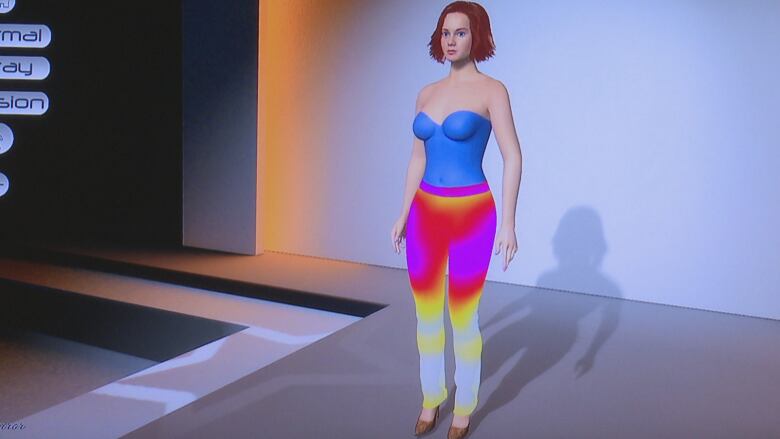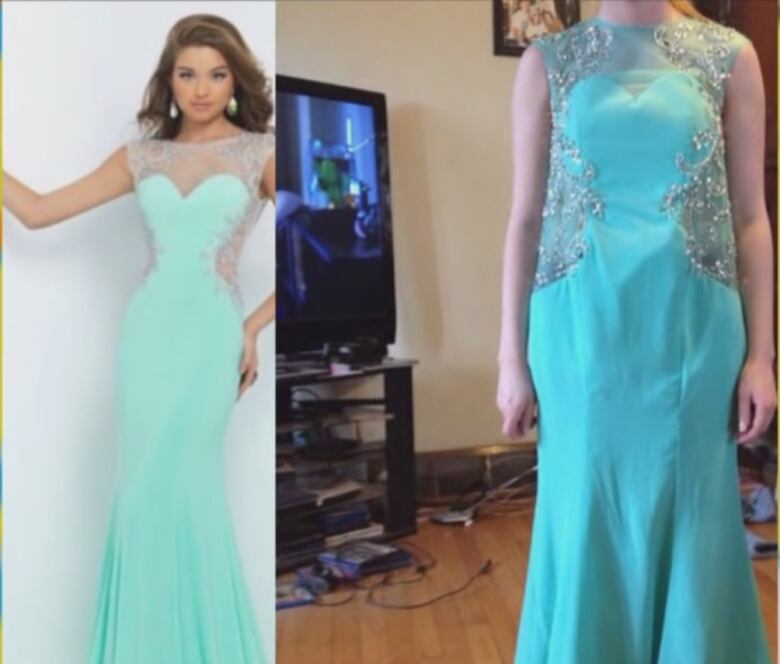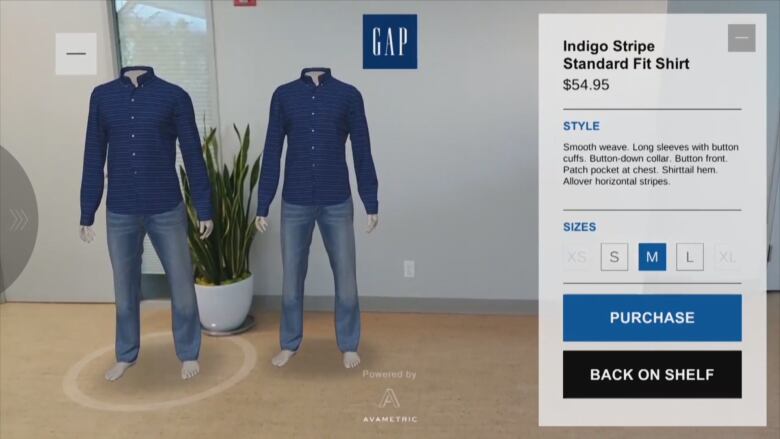The final frontier for online shopping: Fashion that fits
Because 'Its such a hassle to return,' innovators scramble for new fitting technology

As more consumers embrace the convenience of online shopping for books, music, electronics and all manner of merchandise, one category is not growing as fast as the others: clothing.
Many shoppers believe there's just too big a risk that the garment won't fitor won't look good on them.
That's the case for Amit Sood, who recently spoke to CBC while strolling through a Toronto mall.
"I'm more comfortable visiting the shop because you can try the clothes and see if it fits you well," says Sood.
Shopper Hilary Doyle says she's had some success buying fashion online, but it's hit or miss."It works out well except when it's not the right size, in which case it's such a hassle to return," she complains.

Fit is a massive challenge for e-commerce, and there's a belief in the industry that if the problem could be solved, the profits would roll in.
"It's really the last, most exciting part of the consumer web where we are still working on organizing it and presenting it to the consumer, so that it explodes with growth," proclaims CEO William R. Adler in a corporate video for his company True Fit. The Bay licenses True Fit technology for its e-commerce site.
Everyone wants it
Vancouver-based retail consultant David Ian Gray says corporations and customers would love to see a better way to buy clothing online.

"For the retailer it's more economical, you're not dealing with fixed stores. For the shopper they don't have to leave their home, they love this whole idea of shopping online. But for clothing, for shoes, for dresses, pants, shirts fit is everything."
- 76% of Canadians shopped online last year
- Canadian consumers are changing online shopping
- Why don't we use our phones to buy stuff?
The challenge is confounding though, given that there is no universal sizing standard. A size from one brand that fits you perfectly may be too big or too small from a different brand. Then the cut and fabric come into play. Add in the virtual nature of website shopping and a satisfying solution seems like mission impossible.
"It may look good in a picture, but it's reallywhen it's on you that it counts," says Gray.
Measuring up
That's why the industry is pouring millions of dollars into developing and trying technological solutions. Augmented reality, avatarsand algorithms that approximate your size based on measurements you provide are already in the marketplace.
The Gap recently announced an app it calls Dressing Room. Users can select their body shape from five options, then click on a piece of clothing they want to try. A 3D image of their shape wearing the item will appear right in their own home.
The Bay's True Fit system allows shoppers to input their height, weight, and age along with the size they wear in specific brands. The data-driven personalization platform claims to get "smarter as we learn more about what fits you and what types of clothes and shoes you love," and helps to determine a recommended size in the chosen item.
It will show you where the clothing is tight or loose. Jenny TcharnaiaoftriMirror
Entrepreneur Jenny Tcharnaia of Toronto has an animated solution called triMirror.
"It will show you where the clothing is tight or loose," she explains, demonstrating the high-tech system which features fabric that moves in a realistic waywhen hercustomized avatar does the avatar also sports her hairstyle and facial features.
"So white is where it's very loose, yellow is where it's touching but not stretching, and red is where it would be cutting off circulation."
Tcharnaia has spent five years and over $1million to develop triMirror. She and her partners rounded up money from private investors along with the Canada Media Fund. So far only one retailer has signed up to license it, a jeans store in New York City.
No one solution
Tcharnaia insists that more will come. "The ideal client is a vertically integrated brand who can use it for design, for production, for retail," she says. "A lot of clients have come to uslooking for this technology. The market is really heating up for it."
Despite the efforts of multiple players, though, no one technology is a front-runner.
"We see a lot of attempts, little pilots going on, but nothing has become industry standard," says Gray. "I really don't see one solution for the whole industry. I see this as eventually being a compendium of solutions."
Online shoppers can take heart, though: in a world of self-driving cars, space travel and artificial intelligence, surely the ability to find a dress or jacket online that will fit when it comes out of the box can't be all that far off.













_(720p).jpg)


 OFFICIAL HD MUSIC VIDEO.jpg)
.jpg)



























































































